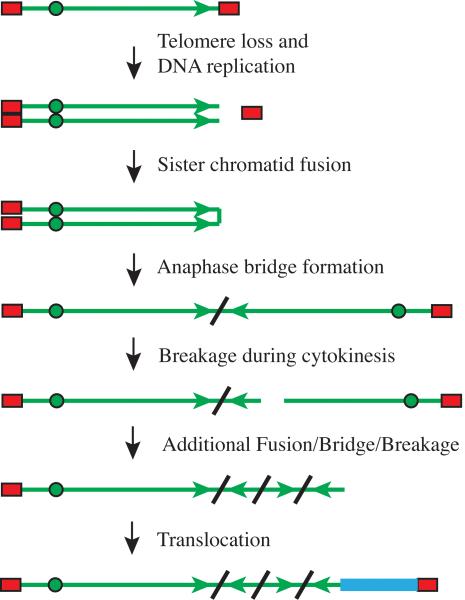Figure 1.
Mechanism of chromosome instability involving breakage/fusion/bridge cycles. A double-strand break near a telomere before or during DNA replication results in telomere loss and sister chromatid fusion. Due to the presence of two centromeres, the fused sister chromatids break during anaphase, resulting in an inverted repeat on the end of one of the chromosomes in one daughter cell and a terminal deletion on the other chromosome in the other daughter cell. The absence of a telomere on the broken chromosomes leads to additional fusions, bridges, and breaks in subsequent cell cycles, resulting in further amplification. The acquisition of a telomere, most often by translocation from other chromosomes, eventually stabilizes the chromosome. Represented in the illustration are a chromosome (solid green line), the replicated sister chromatids (double green lines), telomeres (red rectangles), centromeres (green circles), the orientation of the subtelomeric region (arrows), sites of chromosome fusion (diagonal lines), and a translocation (heavy blue line).

